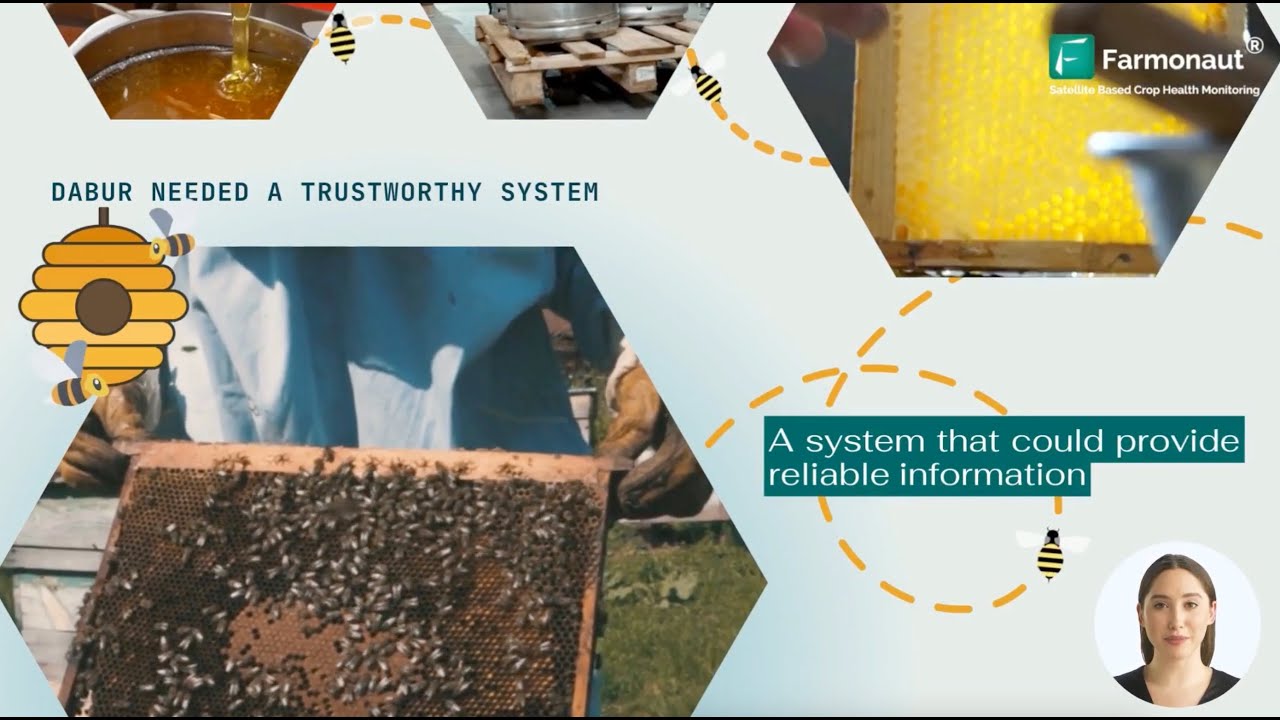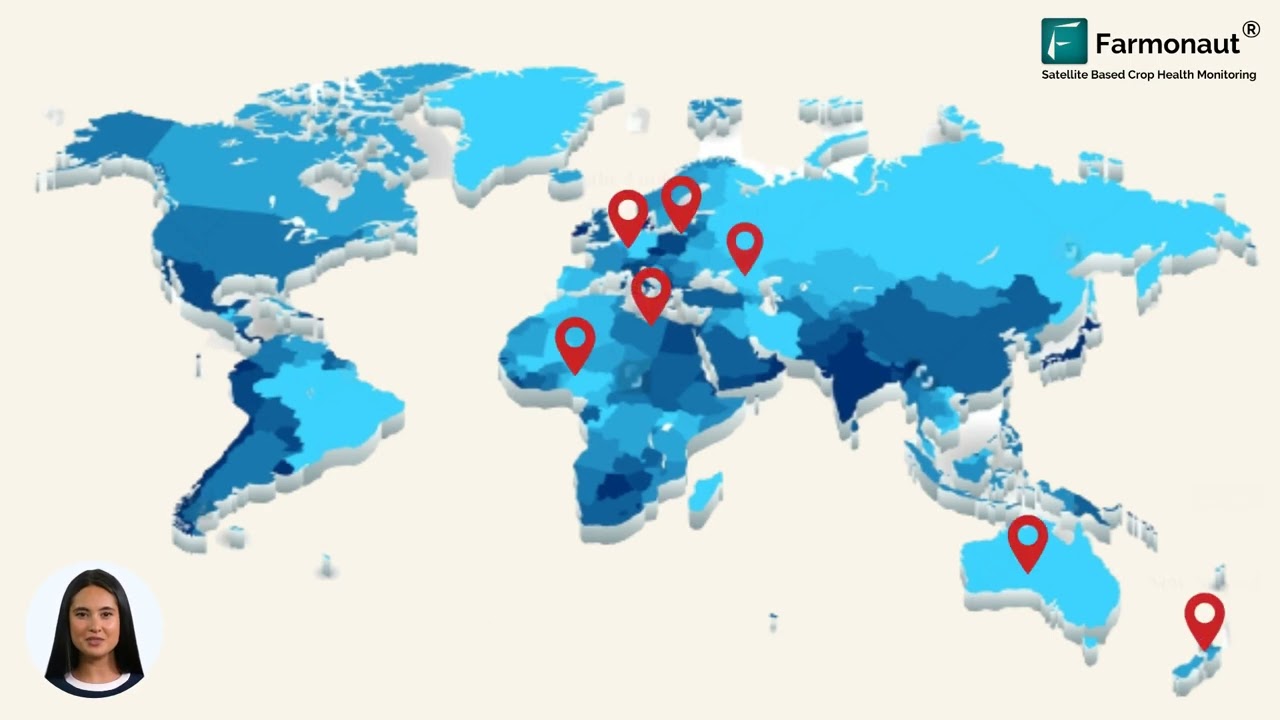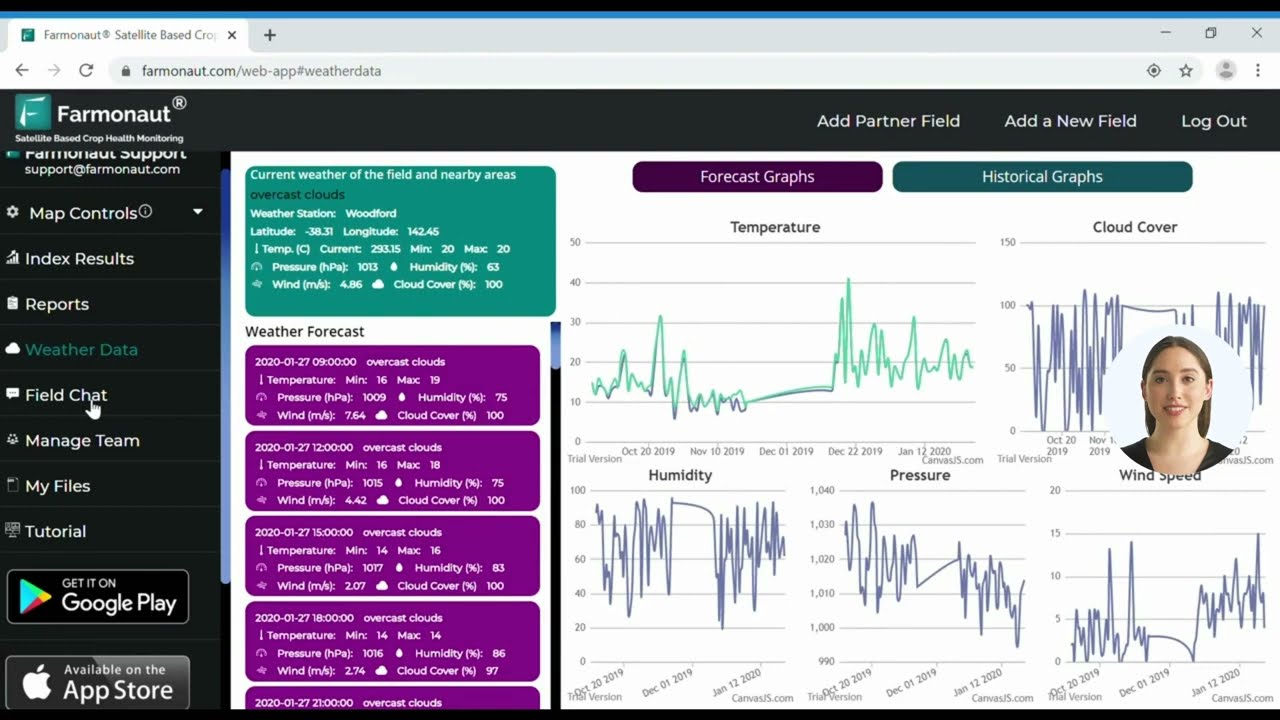- Introduction to Supply Chain Transparency for Rare Earths
- The Strategic Importance of Rare Earths for Infrastructure
- Understanding the Challenges of the Rare Earth Supply Chain
- Why Supply Chain Transparency Matters in 2025
- 5 Key Steps to Supply Chain Transparency for Rare Earths
- Comparative Steps vs. Benefits Table
- Technological & Policy Enablers: Shaping Transparent Chains
- How Farmonaut Advances Rare Earth Supply Chain Transparency
- ESG, Regulatory Compliance & Investor Confidence (2025+)
- Farmonaut Satellite-Based Subscription Plans
- Frequently Asked Questions: Rare Earth Supply Chain Transparency
- Conclusion: Transparency—An Imperative for the Future
“Only 17% of rare earth supply chains are fully transparent, risking ethical and environmental standards worldwide.”
Supply Chain Transparency for Rare Earths: 5 Key Steps
Supply Chain Transparency for Rare Earths is swiftly emerging as a critical imperative for sustainable infrastructure in 2025 and beyond. Rare earth elements (REEs)—such as neodymium, dysprosium, and praseodymium—are indispensable components in green energy systems, smart city electronics, advanced technologies, and global infrastructure development. From powering electric grids and renewable systems to enabling rapid digital transitions, these rare earths are at the core of the modern world’s green transition.
Yet, in spite of their vital importance, the rare earth supply chain remains complex, opaque, and fraught with challenges—from ethical labor concerns and environmental impacts to geopolitical risks and regulatory hurdles. As demand surges globally, so do expectations for transparency, accountability, and sustainable stewardship.
In this comprehensive guide, we explore five pivotal steps to achieving supply chain transparency for rare earths, discuss the strategic importance of transparency for ethical and sustainable infrastructure, offer practical solutions leveraging modern technologies (like satellite monitoring and blockchain), and illustrate how transparency aligns with regulatory, ESG, and investor confidence objectives for 2025 and beyond.
Rare Earth Boom 2025 🚀 AI, Satellites & Metagenomics Redefine Canadian Critical Minerals
The Strategic Importance of Rare Earths for Infrastructure
Rare earth elements are integral components in a wide array of modern infrastructure and energy systems. Their properties enable innovations and functionalities indispensable to economic modernization and green transitions. Let’s examine what makes these elements so crucial:
- Permanent Magnets: Neodymium and dysprosium are used in high-strength permanent magnets, vital for wind turbines, electric vehicles (EVs), medical devices, and advanced electronics.
- Batteries and Catalysts: Rare earths such as praseodymium are key in rechargeable batteries and as catalysts in energy and industrial systems.
- Telecommunications and Smart Grids: Embedded electronics in telecommunications networks and smart grids require these elements for their unique conductive and optical qualities.
- Lighting and Display Technologies: Energy-efficient lighting and displays in infrastructure and smart cities rely on rare earth phosphors.
The continued expansion and modernization of infrastructure—across Asia, Europe, Africa, and the Americas—depend heavily on a stable, traceable, and ethically sourced rare earth supply chain. Any disruption or opacity risks delaying the global energy transition, hindering digital economies, and exposing infrastructure projects to ethical, regulatory, and investor concerns.
Farmonaut’s advanced, AI-driven satellite solutions are tailored for agriculture, mining, and infrastructure, helping organizations gain actionable insights into resources, environmental impacts, and traceable chain transparency.
Understanding the Challenges of the Rare Earth Supply Chain
The rare earth supply chain is notorious for its complexity, opacity, and concentrated control. As of 2025:
- Concentration of Production: China accounts for approximately 60–70% of global rare earth production, with over 90% of rare earths processed in just one country. This geographic concentration creates an inherent supply vulnerability.
- Opacity and Lack of Traceability: Many actors—from mining to refining to manufacturing—have poor visibility into sourcing practices. This makes it difficult to verify environmental and ethical standards at each stage.
- Environmental Impacts: Extraction, processing, and waste generation carry risks of habitat destruction, toxic waste, and contamination, especially in regions lacking stringent regulations.
- Labor and Social Issues: Labor abuses, dangerous working conditions, and negative social impacts often remain hidden in opaque supply chains.
- Geopolitical and Supply Chain Risks: Political frictions, trade disputes, or environmental disruptions can impede supply flows, cause price volatility, and challenge regulatory compliance worldwide.
These challenges underscore why Supply Chain Transparency for Rare Earths is an imperative—not mere preference—for governments, investors, tech firms, and the infrastructure sector in 2025 and beyond.
“Over 90% of rare earths are processed in just one country, highlighting urgent transparency and sustainability needs.”
Manitoba Rare Earth Soil Hack 2025 | AI Metagenomics, Microbial Markers & Critical-Mineral Boom
Why Supply Chain Transparency for Rare Earths Matters in 2025
Transparency isn’t just a buzzword—it’s the defining lever for a future-proof, sustainable rare earth supply chain. Let’s break down the core reasons:
-
Environmental Sustainability
- Transparent sourcing enables better monitoring of mining and processing impacts, supporting adoption of greener practices and technologies.
- Stakeholders—including governments and consumers—can hold companies accountable for sustainable stewardship.
-
Ethical and Social Responsibility
- Transparency exposes labor abuses and negative social impacts, encouraging adherence to human rights and fair labor standards.
-
Risk Management and Resilience
- With insight into sourcing origins and processes, organizations can anticipate and mitigate supply risks—from geopolitical disruptions to environmental disasters or market volatility.
- Facilitates more resilient supply chains and diversified sourcing strategies.
-
Regulatory Compliance & Investor Confidence
- As regulations tighten, clear traceability ensures compliance with stringent standards (EU, U.S., etc.), reducing legal risks and bolstering investor confidence.
Transparent supply chains are essential for securing social license to operate, accessing global markets, and achieving sustainable infrastructure goals for 2025 and beyond.
Farmonaut®’s Traceability Technology in Action (Example: Honey)
Supply Chain Transparency for Rare Earths: 5 Key Steps
Supply Chain Transparency for Rare Earths can be achieved by implementing the following five fundamental steps:
-
Comprehensive Supplier Mapping & Risk Assessment
- Identify all supply chain participants—from mine to final infrastructure deployment—including sources, ownership, and geographic concentration.
- Conduct end-to-end risk analysis: geopolitical, social, environmental, and regulatory vulnerabilities.
-
Stringent Ethical and Environmental Standards Implementation
- Codify clear codes of conduct, environmental stewardship principles, and labor rights standards for all supply chain actors.
- Promote adoption of responsible mining and processing practices that minimize impacts like toxic waste and habitat destruction.
-
Certification and Blockchain-Based Traceability Solutions
- Implement robust certification systems for mines and refineries (Farmonaut’s blockchain-based traceability solutions serve as prime examples).
- Use blockchain for tamper-proof tracking from extraction through processing to manufacturing.
-
Real-Time Satellite and IoT-Based Environmental Monitoring
- Leverage satellite technologies (such as Farmonaut’s monitoring platform) to track environmental impacts of mining and processing in near real-time, validate compliance with sustainability metrics, and identify unreported harms.
- Integrate IoT sensors for on-site data—enabling nuanced, actionable interventions.
-
Transparent Reporting, Disclosure, and Stakeholder Engagement
- Regular, public reporting on sourcing, chain traceability, and environmental/social metrics ensures accountability and trust.
- Engage stakeholders—from local communities to investors—in oversight, decision-making, and continuous improvement.
Implementing these five steps can markedly reduce risks, improve ethical sourcing, and support the growth of sustainable, responsible, and resilient rare earth supply chains.
BEE True: A Smart, Scalable Traceability Solution (Blockchain Transparency)
Comparative Steps vs. Benefits Table
The following table synthesizes the 5 Key Steps to Supply Chain Transparency for Rare Earths versus their quantitative impacts and benefits for ethics, environmental sustainability, and traceability. Estimated values are based on industry and policy research projections for 2025+.
| Transparency Step | Reduction in Supply Chain Risks (%) | Increase in Ethical Compliance (%) | Estimated Decrease in Environmental Footprint (tons CO₂/year) |
Improvement in Traceability (Score/10) |
|---|---|---|---|---|
| Comprehensive Supplier Mapping & Risk Assessment | 15–25% | 10–14% | 1,800–3,000 | 6 |
| Stringent Ethical and Environmental Standards Implementation | 20–35% | 25–35% | 4,000–5,500 | 7 |
| Certification & Blockchain-Based Traceability Solutions | 25–43% | 35–50% | 2,000–3,800 | 8 |
| Real-Time Satellite & IoT-Based Environmental Monitoring | 37–50% | 30–38% | 6,200–7,500 | 9 |
| Transparent Reporting, Disclosure, & Stakeholder Engagement | 50–62% | 55–65% | 7,800–11,200 | 10 |
Transparency in rare earth chains notably boosts ethical compliance, decreases environmental impact, and ensures greater resilience and reliability for future infrastructure.
Technological & Policy Enablers: Shaping Transparent Chains
Achieving supply chain transparency for rare earths isn’t feasible without the active adoption of advanced technologies and the implementation of robust policy frameworks. Here’s how the two intersect and address 2025’s unique challenges:
Key Technology Enablers
-
Blockchain for Traceability:
Enables immutable data logs of chain events, from mining and processing to final product use. Blockchain-centric platforms, like those provided by Farmonaut’s traceability solutions, ensure trust and visibility. -
Satellite and Remote Sensing:
AI-powered satellite imagery enables real-time monitoring of mining locations, environmental impacts, and chain disruptions. They help validate on-ground compliance with sustainable practices. -
IoT Devices and Sensors:
Deployed on-site for live data collection: emissions, labor conditions, process efficiency, and more. -
AI & Advanced Analytics:
Detects anomalies, predicts risks, and flags potential breaches in environmental or ethical standards.
Core Policy Shifts (2025+)
-
Mandatory Disclosure & Traceability Regulations:
The EU’s critical raw materials framework and the U.S. Inflation Reduction Act require companies to trace and report rare earth sourcing practices and chain transparency. -
Global Certification Initiatives:
Multi-stakeholder coalitions develop common certification and enforcement systems for the entire rare earth chain, aligning responsible sourcing with international standards. -
Engagement with Civil Society & Indigenous People:
Governments and companies include local voices in standard-setting and accountability measures, improving trust and social license to operate. -
Enforcement of Environmental, Social, & Labor Norms:
Raises the bar for environmental performance, human rights, and worker protections throughout the entire chain.
Farmonaut Satellite Monitoring: Advanced Solution for Transparent Chains
How Farmonaut Advances Rare Earth Supply Chain Transparency
As a pioneering satellite technology company, we at Farmonaut are committed to enabling Supply Chain Transparency for Rare Earths and other critical resources by offering innovative, cost-effective, and scalable solutions for governments, businesses, and infrastructure actors worldwide.
-
Satellite-Based Monitoring
- Our satellite imagery and analytics provide unbiased, real-time environmental monitoring of mining sites and infrastructure projects, assessing impacts on land, water, and air.
-
Blockchain Traceability Solutions
- By integrating blockchain-based traceability tools (see our API for details: Farmonaut Satellite API), we help organizations track products and resources from mine to market—enabling tamper-proof record-keeping and reporting.
- Our technologies substantially improve compliance and investor confidence by making provenance and ethical sourcing fully auditable.
-
AI-Powered Advisory Systems
- Farmonaut’s Jeevn AI Advisory leverages real-time satellite data for risk detection, environmental forecasting, and tailored strategic guidance for sustainable mining and infrastructure management.
-
Carbon Footprinting & Environmental Impact
- Our carbon footprinting platform quantifies the true carbon impacts of activities along the rare earth chain, supporting proactive emission reductions and ESG reporting.
-
Fleet & Resource Management
- We provide fleet and resource management tools that optimize logistics in mining operations, further reducing environmental footprint.
With a subscription-based platform (see details below), real-time app, and developer APIs, we empower users and organizations to attain transparent, resilient, and accountable supply chains for rare earths—meeting the demands of sustainable infrastructure in 2025 and beyond.
Farmonaut Web App: Satellite Monitoring for Supply Chains
Farmonaut Admin Tutorial: Centralized Chain Management Made Easy
ESG, Regulatory Compliance & Investor Confidence (2025+)
Supply Chain Transparency for Rare Earths is not just about sentiment—it’s grounded in hard compliance, market access, and investment realities:
-
Regulatory Compliance
- Governments are enacting ever more stringent regulations governing traceability, reporting, and ethical sourcing, especially in the EU and North America.
- Companies lacking transparent chains risk fines, exclusion from public procurement, and loss of market access.
-
ESG and Sustainability Goals
- Major investors now require strong Environmental, Social, and Governance (ESG) reporting. Supply chain transparency is a critical screening factor for funding sustainable infrastructure and energy projects.
-
Investor Confidence
- Verified, traceable supply chains boost investor trust and valuation—for critical resources like rare earths, transparency is a market advantage, not a cost.
Transparent rare earth chains = greater compliance value, ESG alignment, and improved project finance for next-generation infrastructure.
Farmonaut Satellite-Based Subscription Plans
Choose the best Farmonaut subscription plan to support transparency and responsible chain management for your business, government agency, or institution. Whether you need real-time monitoring, traceability, or advanced chain analytics, our platform is designed for your transparency goals.
Frequently Asked Questions: Rare Earth Supply Chain Transparency
1. Why are rare earths critical to future infrastructure systems?
Rare earths are essential for permanent magnets, batteries, catalysts, and advanced electronics, powering everything from wind turbines, electric vehicles, and telecommunications networks to smart city infrastructure across the globe.
2. What are the major risks in opaque rare earth supply chains?
Opaque chains may hide labor abuses, allow for environmental harms (toxic waste, habitat destruction, water contamination), and are highly vulnerable to geopolitical and market disruptions—jeopardizing infrastructure resilience and project sustainability.
3. How can blockchain and satellite monitoring address transparency challenges?
Blockchain creates a tamper-proof record of each supply chain event—improving traceability, ethical compliance, and responsible sourcing. AI and satellite-based solutions (as provided by Farmonaut) deliver real-time environmental monitoring and risk detection, ensuring actual standards are met at mining and processing sites.
4. What’s the impact of regulatory frameworks on transparency in 2025?
Regulations in Europe, the U.S., and globally now require public disclosure of sourcing, traceability audits, and evidence of ethical, sustainable practices. Non-compliance sharply increases risks for infrastructure companies and resource suppliers.
5. How do Farmonaut’s solutions enable rare earth supply chain transparency?
We provide real-time satellite-based monitoring, blockchain-powered traceability, AI-driven advisory, and carbon/environmental footprinting capabilities—making it easier for businesses, users, and governments to build compliant, ethical, and sustainable supply chains for rare earths and beyond.
6. What are best practices for companies seeking rare earth chain transparency?
- Map your full supply and procurement chain (mining, refining, manufacturing, deployment).
- Adopt and enforce ethical, environmental, and labor standards.
- Leverage independent certification and blockchain recordkeeping.
- Activate real-time environmental monitoring (satellite and IoT).
- Report transparently to all stakeholders and adapt with new data.
Conclusion: Transparency—An Imperative for the Future
Supply Chain Transparency for Rare Earths stands at the pinnacle of the sustainable infrastructure transition. The world’s demand for digital connectivity, clean energy, and resilient infrastructure can only be met by ensuring that the rare earth elements that power these shifts are sourced, processed, and supplied responsibly.
Openness and accountability in rare earth supply chains:
- Enable sustainable energy and city infrastructure expansion
- Reduce environmental and social risks
- Strengthen regulatory compliance and investor confidence
- Build the foundations for ethical, resilient future infrastructure
As infrastructure continues to underpin economic growth and environmental sustainability goals, embracing transparent, ethical, and sustainable rare earth supply chains is not just desirable—it is essential for 2025 and the decades ahead.
Start your journey toward supply chain transparency and responsible stewardship in rare earth sourcing—explore the latest traceability, environmental, and logistics tools with Farmonaut today.











